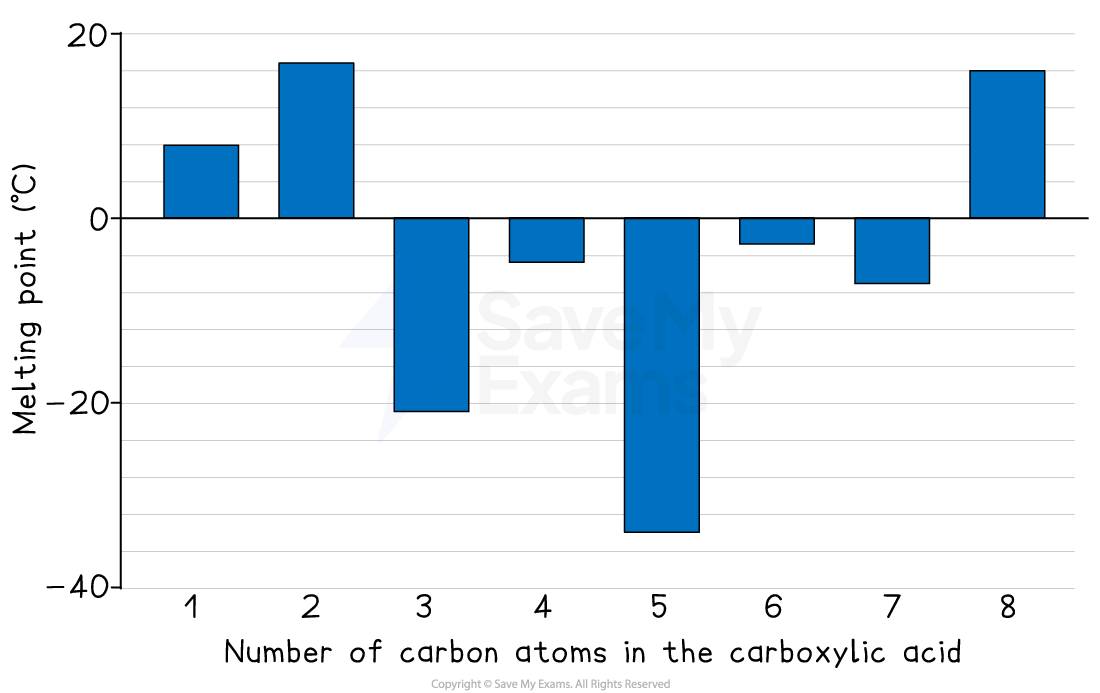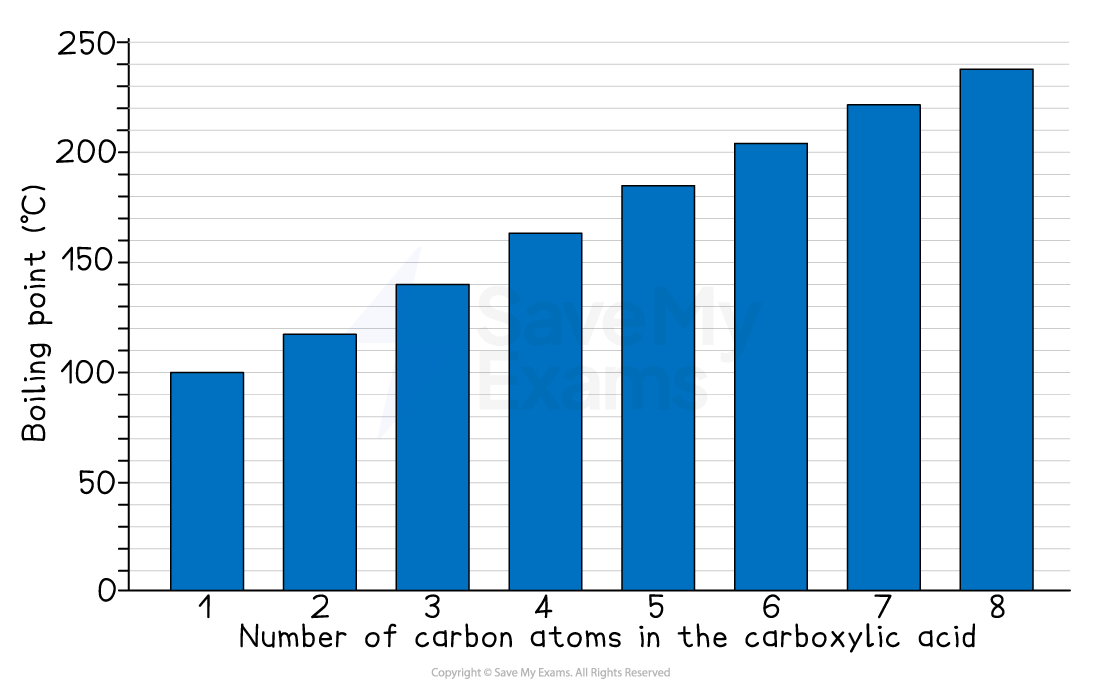Properties of Carboxylic Acids (SQA National 5 Chemistry): Revision Note
Exam code: X813 75
Miscibility of carboxylic acids
The miscibility / solubility of a carboxylic acid in water changes as its carbon chain gets longer
Miscibility of small carboxylic acids
Methanoic, ethanoic, propanoic and butanoic acid are miscible with water
Their size and -COOH group allow them to mix completely with water
Miscibility of larger carboxylic acids
From pentanoic acid onwards, the solubility decreases significantly as the carbon chain gets longer
The long hydrocarbon part of the molecule does not mix well with water
This effect becomes more significant as the chain grows
Solubility of carboxylic acids in water
Carboxylic acid | Number of carbons | Solubility (g per 100g of water) |
|---|---|---|
methanoic acid | 1 | miscible |
ethanoic acid | 2 | miscible |
propanoic acid | 3 | miscible |
butanoic acid | 4 | miscible |
pentanoic acid | 5 | 3.7 |
hexanoic acid | 6 | 1.0 |
heptanoic acid | 7 | 0.2 |
octanoic acid | 8 | 0.07 |
Melting & boiling points of carboxylic acids
As the size of carboxylic acid molecules increases, their melting and boiling points also increase
Melting points of carboxylic acids
The melting points of carboxylic acids generally increase as the number of carbons in the chain increases
In general, a bigger molecule means a higher melting point

The trend for melting points of carboxylic acids is less regular than boiling points
Boiling points of carboxylic acids
The boiling points of carboxylic acids show a much clearer and more predictable trend:
The boiling points increase as the molecule gets bigger

Explaining the general trend
The overall trend for both melting and boiling point is that they increase as the molecule gets bigger
The melting and boiling points increase because:
As carboxylic acid molecules get larger, the strength of the intermolecular forces increases
More energy is needed to overcome these stronger forces to allow the substance to melt or boil
Therefore, the melting and boiling points generally increase
Examiner Tips and Tricks
This explanation for increasing melting and boiling point is the same as for alcohols:
Larger molecules have stronger intermolecular forces, which require more energy to overcome

Unlock more, it's free!
Did this page help you?